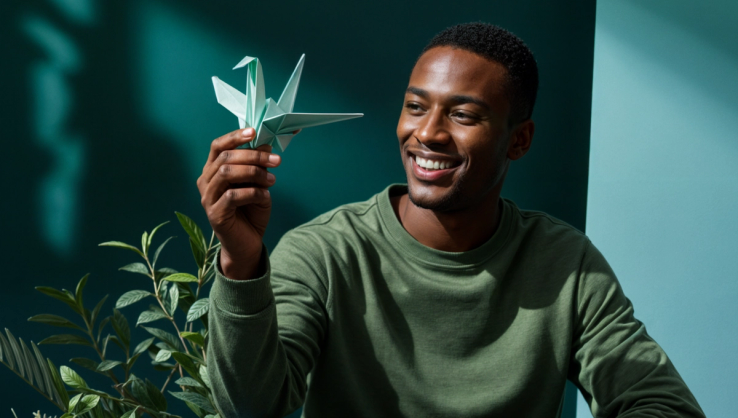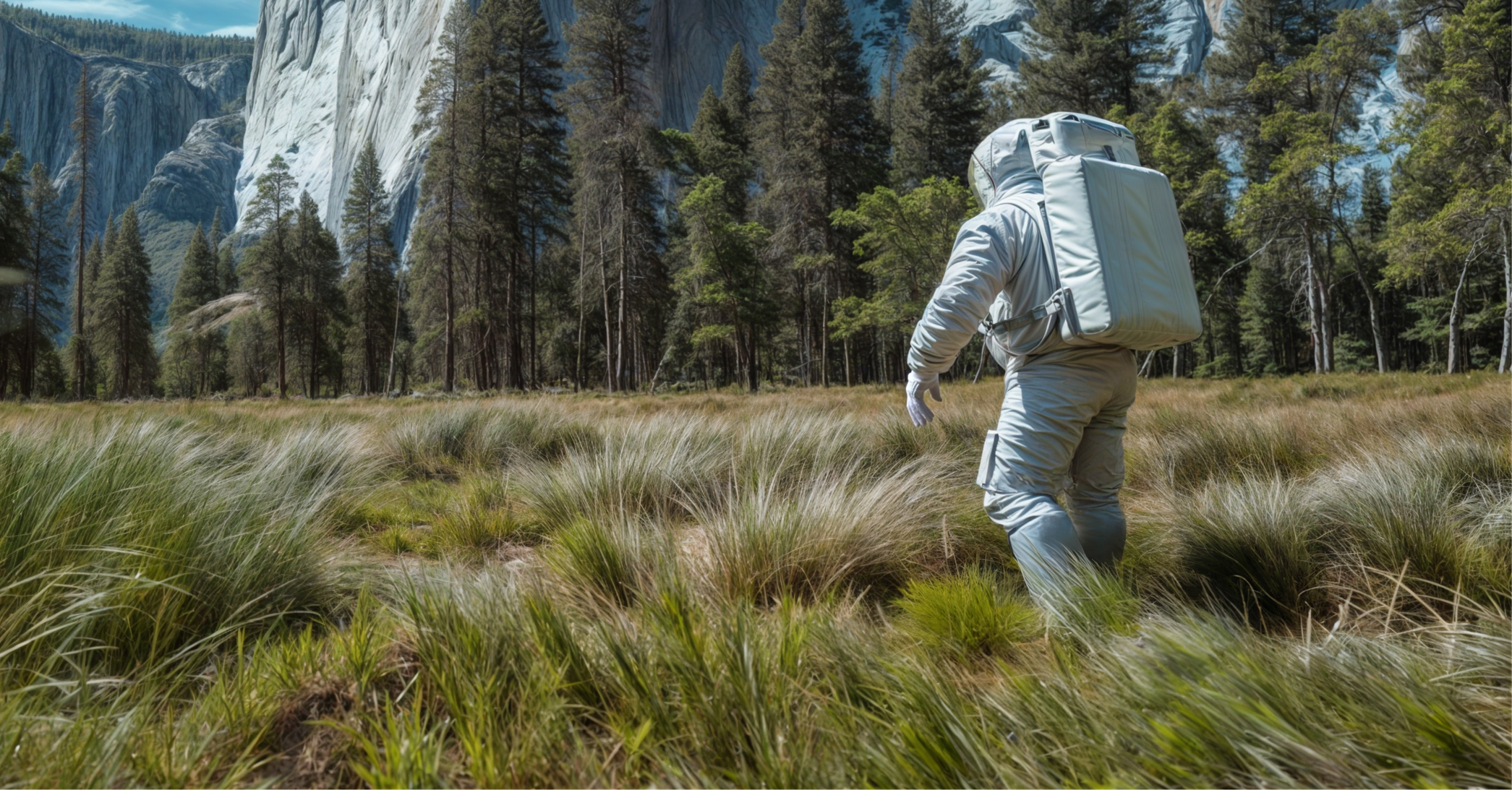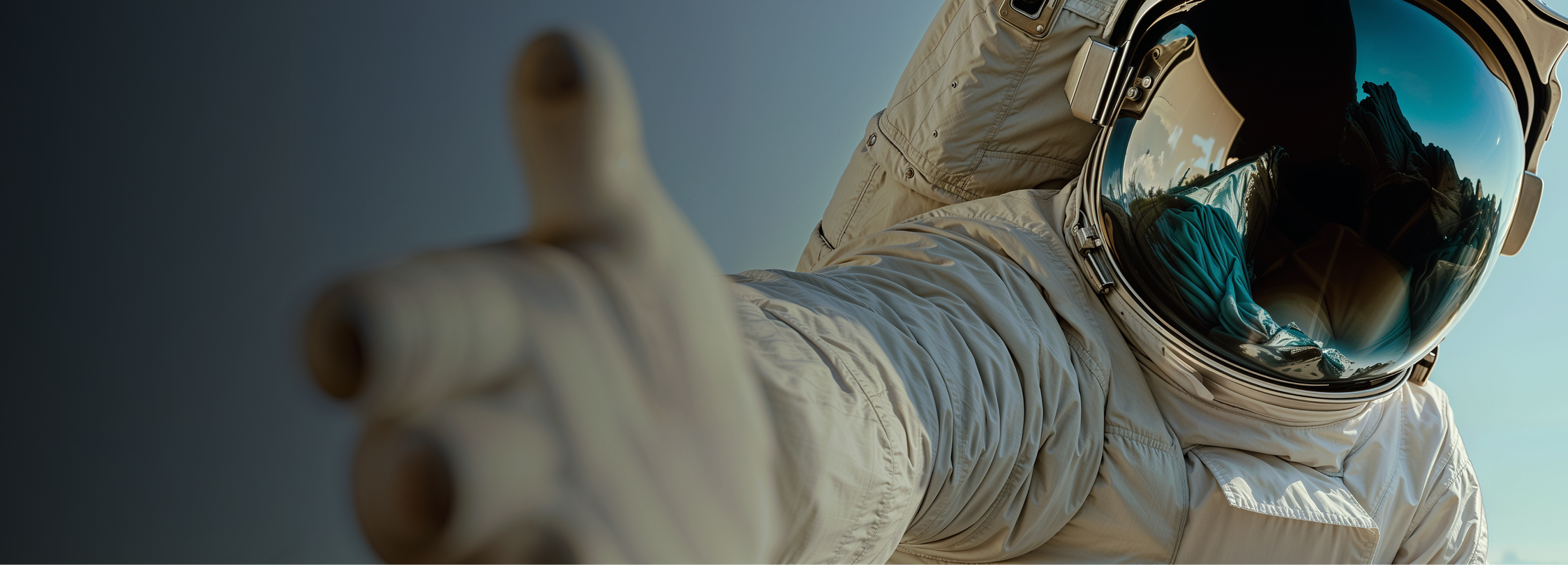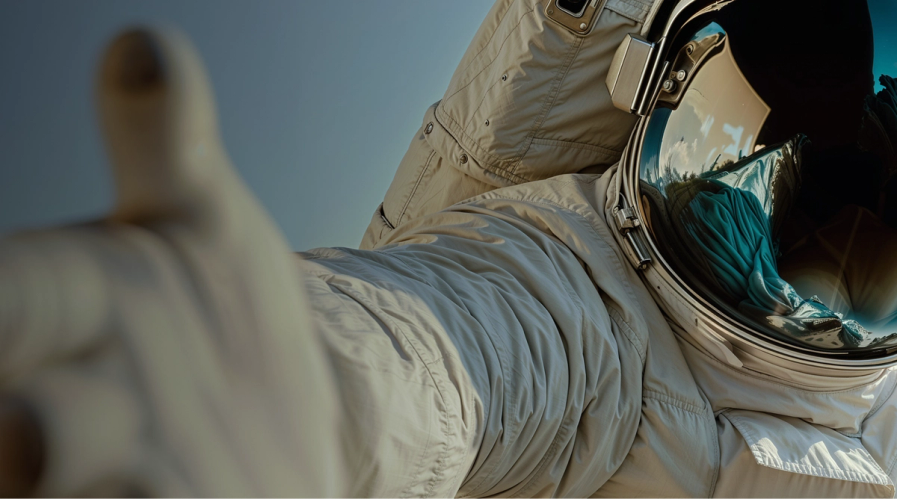
The Transformative Effect of AI in Creative Industries
Published 26 Feb, 2024
AI in creative work is everywhere, but what kind of effect is it really having? Phillip Maggs, Superside’s Creative Director of New Horizons, shared his thoughts on how AI is transforming the creative industry in a recent interview. Get his take on this hot topic below.
How is AI impacting the creative industry? To quote author John Green, “Slowly and then all at once.” It started in earnest with the public release of ChatGPT and now AI is embedding itself into all forms of creative work.
Will AI eventually erase entry-level creative jobs entirely? How have creative roles already shifted? What are the new “must-have” creative skills in this, “age of AI?”
Who better to ask than Superside’s own Creative Director of New Horizons, Phillip Maggs. Maggs is the mastermind behind Superside’s new AI-enhanced creative services, bringing decades of experience as a creative technologist to the table. In other words, he lives and breathes envelope-pushing advancements in the creative space.
Get his take on the impact of AI in creative industries—and no, it doesn’t involve anyone losing their jobs!
How AI Will Transform Creative Industries: An Interview With Phillip Maggs
Are there certain industries you’re seeing adopt AI a lot faster?
Creatives are very good at grabbing new things, we’re generally early adopters. So I think our industry is pretty much at the forefront.
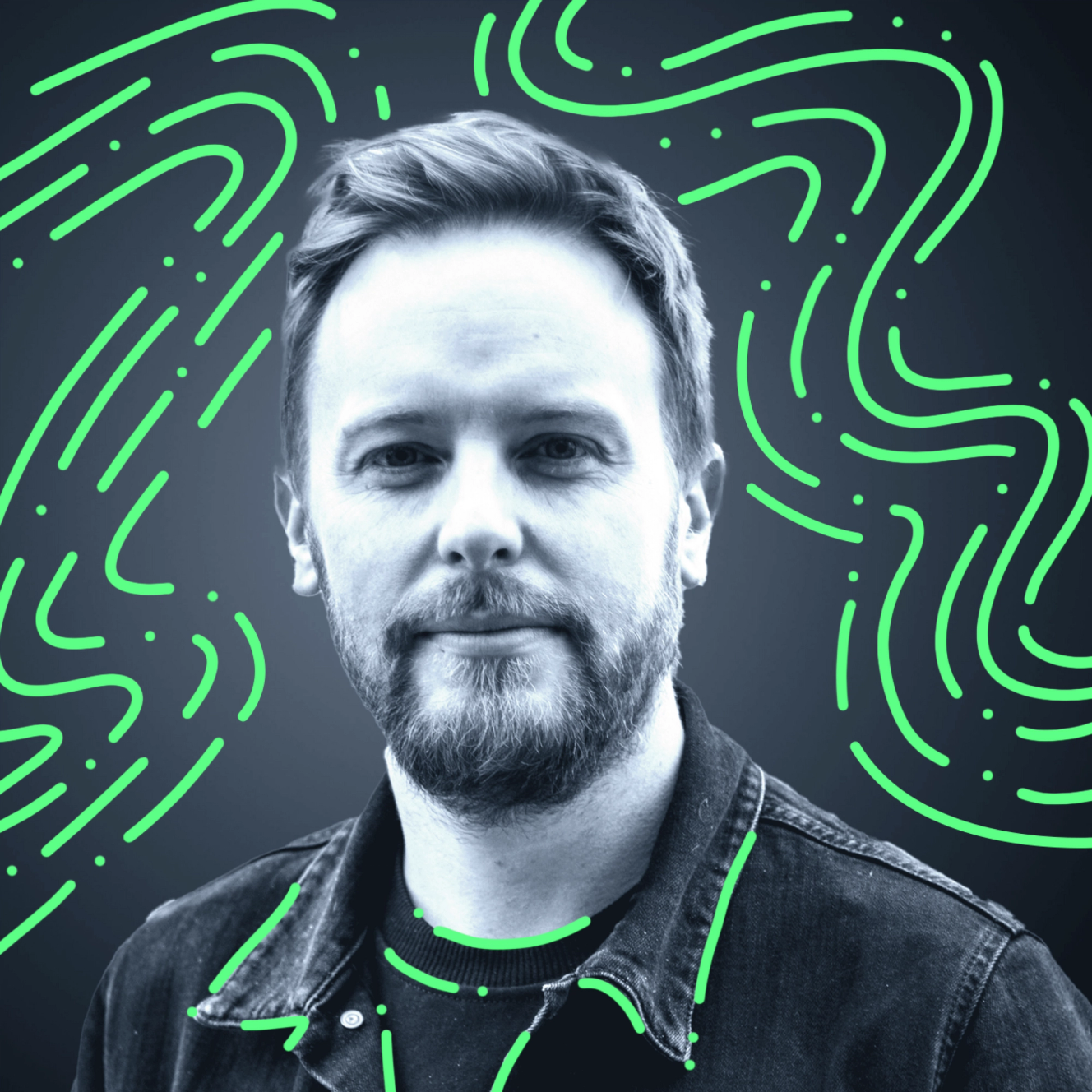
In my experience, marketing, advertising and creative industries have been at the forefront of AI adoption because we can see the use cases clearly in front of us. And also the risk of compliance is a lot lower than industries like healthcare or finance.
What is AI in design good at today, and where do you see it headed?
AI in design is good at all the component parts today but not very good at putting them together. So it could be good at producing photography within images or spot illustrations within images. But it’s not good at putting these things together.

The way I see things going in the future is more tailored, specific agents. So you could have an AI agent that’s really good at producing photography in a certain style, or illustrations in a certain style. And those agents will be able to talk to each other.
So you could just prompt one master AI agent and say, “I’d like to produce an ad that speaks to this person and sells this concept,” and then the agents in the layer below will produce the images, produce the copy, produce the artwork and bring things together.
At the moment, AI is good at doing each of those things individually. In the future, I can see AI connecting the dots so you just have to ask one question and it will go ahead and do all those things for you.
It seems like the common perspective is that with AI entry-level design roles may disappear. What’s your take on that?
People that hold that belief don’t generally work in the professional fields that we work in. We use AI as a tool and we use it as a tool in a distinct part of the processes. Creative projects are complicated things, you don’t just use one tool to produce all outcomes.

AI is injected into the appropriate part of creative workflows. We use it to speed up or create more options or create things we couldn’t create before. For example, we can do 3D avatars now a thousand times faster than before, but that has certain considerations. We then don’t have the 3D model at the end of it. So we use it where we can.
All this means is that entry-level positions will have to evolve with the times we’re in with AI right now. There’s always been evolution in the design and creative industry. From desktop publishing to digital cameras there are always technological advances in this industry. This is no different with this next wave of evolution.
Especially at Superside, it’s foundational to our mission to produce equal opportunities around the world for creatives. Anecdotally, I’ve grown the size of our team 10X within three months to support AI. So, AI has led to more job creation within this company, not less. It’s led to entry-level positions. I’m a firm believer in entry-level positions and creating opportunity across the board, not just for my senior people.
What roles and abilities do you see becoming more important to design teams?
The most important role is art direction. A great art director is someone who has a vision in their mind of what they want something to feel like, to have visual cohesiveness, to have a strong sense of inherent logic to creative concepts.

This role is amplified because you need to know what to curate, what to pick, what fits for the creative that you’re trying to make.
Same with copywriters or people who make ideas. There’ll be so many more things you could pick from. Your discernment, your subjectivity, your own life experience is all infused into the greatness that you need to now produce with AI.
So those two roles: Copywriters or idea makers, and art directors in terms of what things should look like, they’ll be the most important roles within design teams because you have to be able to create something cohesive with AI rather than just a load of noise and average work.
Are there any emerging design team roles due to AI, like data scientists who help train the models?
Data scientists and creatives are not the same personality types and they’re generally not the same people.

If you think about brand guidelines, they’re usually made by creatives for creatives to use. They’re generally very pretty documents in the form of a PDF showing layouts and different things. But AI doesn’t need brand guidelines, it needs data sets. It needs well-structured information, image tag pairs, information that can be ingested into AI.
Having someone who understands how to structure information so that it’s easily retrievable by AI to produce the outputs they want means there’ll be an evolution from creatives making guidelines they can use to creatives making data sets that AI can use… and that creatives can use again after that.
It doesn’t necessarily mean a change in roles, but it means a bit of a change in culture. Having a data-first culture within the creative team will set it up for success.
How will creative jobs in general evolve in an AI era?
Creative jobs always evolve. But in this new AI era, it’ll mean that people can become creative directors faster. [A creative director] is someone who oversees the authenticity of an idea, the empowerment of a team. Now, the authenticity of an idea is even more important.

There’ll be a sea of sameness since everyone and their moms can use AI. That means, if people are doing basic prompting and work, you have to cut through and differentiate above that work. The only way to do that is to be actually good at your job.
It’ll mean an acceleration in you becoming a creative director, in you becoming someone who oversees ideas, because AI can’t help you with that. And it’ll also mean you need to act like a creative director because your ideas have to be awesome to cut through because there’ll be more average ideas in the world.
So, it’s a call to arms for creatives. We have to be better. And we have to be better with these tools.
Do you predict there’ll be an anti-AI movement, where companies will explicitly say their work was NOT made with AI?
I definitely predict there will be an anti-AI movement within the creative sector. Some companies will pride themselves on saying this is not an AI-produced piece of work, the same way at the moment some companies are saying, ‘This ad is AI-produced,’ and they’re using that as a badge of honor.

The same with artists. Artists will have an allergic reaction to AI, and they’ll be pushed to move their medium forward and find new ways of doing things that AI can’t do. All of this I see as equally exciting.
When it comes to Superside’s position on this: We’ll use AI to help our creatives produce the best work they can where it’s appropriate. Where it’s not appropriate, we’ll do the inverse.
In my opinion, there’s room for all of these things. There’s room for new workflows and there’s room for traditional workflows. And all of it is in service to what we need to be doing, which is producing great creative for our customers.
What’s your wildest prediction for AI and design?
If I look back a year ago to what I could do compared to what I can do right now with AI, we’re actually using brand new AI workflows at scale with customers. The way I see it, in the future AI will touch every single modality.

At the moment, 3D design is hard. Live action film is hard. Motion design is hard. They’re going to be the next dominos to fall so that AI will start to have an impact in these territories. I think these advances will lower the barrier to entry so more people will get involved. And I personally see that as a good thing.
I don’t want to be too bombastic and say it’s going to take loads of people’s jobs or do all these different things. I think it’ll just mean more of an explosion in creativity and creative possibilities. And we’re just at the beginning of this journey—the craziest stuff is yet to come.
Creative Transformation With AI: Key Takeaways
Whether you share Phillip’s enthusiasm for new frontiers in AI or not, one thing we can all agree on is that the technology is here to stay, and it pays to be well informed.
Personally, my top takeaways from Maggs’ interview are:
- Entry-level creatives have nothing to fear. Yes, entry-level jobs are evolving but as long as you’re keen to grow your skill set, there will be even more opportunities for everyone.
- Think data-first and idea-forward. Creative people who also understand how to structure information for AI to get the best outputs will thrive as the use of this technology continues to rise. Those with a creative vision will be in high demand, too.
- AI isn’t right for every creative project. Sometimes it doesn’t make sense to use AI in creative work, and that’s okay. Knowing why and when to use AI is just as important as knowing how to use it.
The Bottom Line on AI in Creative Industries
As Maggs says, “AI, in theory, makes things quicker, faster, better. The challenge everyone faces is that every day, five new models and 10 new services built on those models will come out. And how do you know if Model X is better than Model Y? What about the cost? What about your data security? And how do you do image prompting, and ensure the creative coming out of it is on brand?”
Phew, clearly, there are still a lot of questions about AI. As creative professionals, it’s on us to be curious—to seek out answers and upskill ourselves wherever possible.
But you don’t have to go it alone. At Superside, we do a lot of this applied research for you. Our AI-enhanced creative team has built an ecosystem using 10-15 different AI design tools to get the best outcomes for our customers.
We’ll take on that burden, we’ll do the AI workflow implementation, and all you need to worry about is what’s in the creative brief and what creative are you signing off on. You don’t need to worry about the technical side that sits at the foundational layer.

To harness AI in your creative projects and work with experts like Maggs, get in touch. His team at Superside has already worked on 200+ AI design projects, moving 30-60% faster than traditional workflows and saving customers almost $300K in design hours to date.
Michelle is a SaaS expert who loves digging into the technical side of creativity. She’s worn many hats during her decade in agencies, from project manager to brand strategist, copywriter and social media strategist, and worked across a wide variety of clients (though tech is her jam!). She loves to put the sass into SaaS content… and now CaaS. Connect with her on LinkedIn and send her a pic of your dog (really, she’ll love it).






